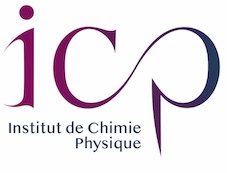Overlooked Activation Role of Sulfite in Accelerating Hydrated Electron Treatment of Perfluorosulfonates
Résumé
Photoexcitation of sulfite (SO 3 2-
) is often used to generate hydrated electrons (e aq -) in processes to degrade perfluoroalkyl and polyfluoroalkyl substances (PFASs). Conventional consensus discourages the utilization of SO 3 2-concentrations exceeding 10 mM for effective defluorination. This has hindered our understanding of SO 3 2-chemistry beyond its electron photogeneration properties. In contrast, the radiationchemical study presented here, directly producing e aq -through water radiolysis, suggests that SO 3 2-plays a previously overlooked activation role in the defluorination. Quantitative 60 Co gamma irradiation experiments indicate that the increased SO 3 2concentration from 0.1 to 1 M enhances the defluorination rate by a remarkable 15-fold, especially for short-chain perfluoroalkyl sulfonate (PFSA). Furthermore, during the treatment of long-chain PFSA (C 8 F 17 -SO 3 -) with a higher concentration of SO 3 2-, the intermediates of C 8 H 17 -SO 3 -and C 3 F 7 -COO -were observed, which are absent without SO 3 2-. These observations highlight that a higher concentration of SO 3 2-facilitates both reaction pathways: chain shortening and H/F exchange. Pulse radiolysis measurements show that elevated SO 3 2-concentrations accelerate the bimolecular reaction between e aq -and PFSA by 2 orders of magnitude. 19 F NMR measurements and theoretical simulations reveal the noncovalent interactions between SO 3 2-and F atoms, which exceptionally reduce the C-F bond dissociation energy by nearly 40%. As a result, our study offers a more effective strategy for degrading highly persistent PFSA contaminants.
| Origine | Fichiers produits par l'(les) auteur(s) |
|---|


